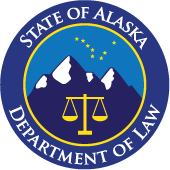Press Release
Know the Right Information Before Buying a Vehicle
March 11, 2022
(Anchorage, AK) – In a time when new car inventory is limited and many used cars are selling at unusually high prices, it’s more important now than ever for consumers to know their rights when shopping for a vehicle.
“A vehicle is probably the second-most costly item many of us will ever purchase, so it’s essential to have the best information available and to know the law before stepping foot on a dealer’s lot or buying a car online,” said Alaska Attorney General Treg Taylor.
Since car buying is such a significant – and often, essential – purchase for Alaska consumers, Attorney General Taylor offered this advice as the Alaska Department of Law’s Consumer Protection Unit observes National Consumer Protection Week:
- The dealer must disclose all dealer fees and charges, except for the title, licensing and registration fees paid to the State of Alaska. Any “document fees,” “preparation fees,” or other charges must be included in the advertised price. Consumers are encouraged to negotiate a “drive it away” price that includes all fees, that way such fees can’t work their way back into the final cost on an offer below the advertised price.
- When buying a used car, consumers should remember that vehicles sold “as is” are exactly that. Consumers have very little legal recourse if problems arise after agreeing to purchase a vehicle “as is.” The best way to evaluate the condition of a used vehicle is to have it checked out by a qualified mechanic before purchasing. Once a consumer is satisfied with the condition of the vehicle, he or she can visit NADA or Kelly Blue Book to get a good estimate as to the car’s value.
- Alaska has no cooling off period for car buyers. Once a purchase is completed, the vehicle cannot be returned.
- If a vehicle requires repairs, repair shops must provide written estimates to car owners. Before a shop may charge more than the estimate, the shop must obtain permission from the consumer.
- When negotiating the price for a new car, know the difference between the Manufacturer’s Suggested Retail Price (MSRP) and the “invoice price,” which is the amount a dealer pays for a car. The MSRP includes all destination charges and is posted on all new cars. Invoice prices might be found on a dealer’s website, or by visiting the National Auto Dealers Association site, or Kelly Blue Book. The dealer still may make a profit even from selling at the invoice price, if certain incentives and bonuses from the manufacturer apply.
To learn more about Alaska law related to car buying and repairs, visit the Alaska Department of Law’s Consumer Protection Unit web page or the Federal Trade Commission’s web site.
# # #
Department Media Contacts: Communications Director Patty Sullivan at patty.sullivan@alaska.gov or (907) 269-6368. Information Officer Sam Curtis at sam.curtis@alaska.gov or (907) 269-6269.
